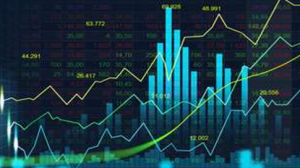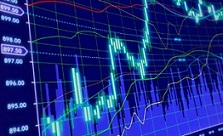MT4 Brokers
February 12, 2018Bitcoin CFDs
April 10, 2018Beginner’s Guide To Index Trading
If you’re new to index trading and looking for a place to start, then you’ve come to the right place.
With the amount of information online these days it can be easy to get lost and confused. Index trading is one of those subjects! But don’t give up! We launched this website to help beginners learn more about online trading and to provide an independent comparison of some of the best CFD brokers available to Australians.
A stock index is a portfolio of stocks that represents a group of shares from a particular section of the stock market.
Most major economies have one or several stock market indices. In Australia, the main index is the S&P/ASX 200 which is made up of Australia’s 200 largest companies. The Dow Jones is a US Index that comprises of stocks from 30 of the largest companies in America. In the UK the main index is the FTSE100. The list goes on.

It’s important to note that when you trade an index, you are merely speculating on whether an index will rise or fall. You are not actually buying and owning the physical shares. Indices trading is trading a derivative product instead of buying the physical underlying asset.
Trading on the price movement of an index allows traders to speculate on whether an indices’ value will go up or down. If you make a ‘BUY‘ trade, you believe that the index will increase in value. If you make a ‘SELL‘ trade then you believe the index will decline in value.
Index Trading Example:
- Say you want to make a BUY trade on the ASX 200 index and the price is 6,000 – 6,001.
- You would buy at 6,001.
- In 3 hours time you see that the price of the ASX 200 has moved to 6,020 – 6,021.
- You decide to close the trade.
- This would be a winning and profitable trade as you opened at 6,001 and closed at 6,020 – an increase of 19 points.
The value of an indice is usually depicted as a number of points. For example, the ASX 200 Index is currently valued around the 5,800 – 6,000 mark. Each indice is calculated slightly differently although there are two main methods of calculation;
Capitalisation-Weighted
This means that a company with a higher market cap (value) will have a greater impact on the overall index price than a smaller company. For instance, Commonwealth Bank has a 7-8% weighting on the ASX 200 as its the largest company within the index; whereas Qantas Airways only has a <1% weighting as it’s much smaller. Therefore, if Comm Bank’s individual share price went down by $0.50, it would move the ASX 200 Index much more significantly than if Qantas’share price went down $0.50.
Price-Weighted
This means a company with a higher share price will have a greater affect on the price movement of the index. For example, company ABC with a share price of $20 will have 5 times the influence on the index than company XYZ who’s share price is just $4. The Dow Jones (USA) and Nikkei 225 (Japanese) are example of price-weighted indices.
In simple terms, the changing value of an indice can be reflected in the seesawing values of all the individual stocks that make up the indice. The ASX 200, for example, represents the largest 200 stocks in Australia – if those individual stocks increase, the price of the ASX 200 index will also increase.
This question comes up a lot – why should I trade indices instead of shares? Or vice versa.
The simple answer is; you can (and should) trade both for a well-diversified portfolio. There is no right or wrong answer. You could trade either, neither or both depending on your risk appetite and individual circumstances.
Investing in an individual stock will provide you with an insight into the financial state of a specific business. Meanwhile, index trading will give you an insight into the health of a market sector or economy as a whole. Indexes will be affected by events such as geopolitical news, employment reports and economic reports. While individual stocks will be moved by company-related news like dividend payments, company profits, new product leaks, potential mergers etc.

The DAX (German 40)
This index tracks the top 40 publicly-listed companies in Germany and includes companies such as Adidas, BMW, Deutsche Bank and Volkswagen.
The FTSE 100 (UK100)
This index tracks the largest 100 companies in the United Kingdom and is regarded as a benchmark of the UK economy. It includes companies such as AstraZeneca, Barclays, BP and Vodafone.
S&P 500 (US500)
The S&P 500 focuses on the biggest 500 publicly-listed companies in the US. The S&P 500 index is one of the most heavily traded indices worldwide.
The DOW (US30)
The Wall St 30 index is based on the top 30 industrial stocks in the USA and includes companies like Amazon, Apple, Visa and Walmart.
Other popular indices include:
- Nasdaq (Composite and Nasdaq 100)
- CAC 40 (France 40)
- Euro Stoxx 50 (Euro 50)
- Japan 225 (Nikkei 225)
- Hong Kong (Hang Seng Index)
There are many benefits to trading indices via a CFD trading platform and some of these are outlined below;
An index broker is a company that provides access to stock indices, such as the DAX40, Wall St 30 and UK100. These markets are available to traders via their online trading platform. There are a few different types of brokers that can provide an indices trading service, including:
CFD Index Brokers
When you trade indices with a CFD broker, you are speculating on the price movement of an index, utilising leverage. Leverage means that a trader only needs to deposit a small % of the total value of the index they are going to trade. This increases their exposure to that particular trade. When you trade CFDs, you never own the underlying asset, instead, you are just speculating on its price movement.
Spread Betting Index Brokers
Indices trading using a spread betting broker is almost exactly the same as using a CFD broker, with two main differences. First, spread betting is tax-free in the UK, whereas CFD trading is not. Secondly, when you spread bet, you are trading in your account’s base currency, whereas on a CFD account, you are trading on the product’s underlying currency. For instance, you would be trading in USD per point if you were trading the Wall St 30 index, even if you have a GBP account with your CFD broker.
Index Future Brokers
Brokers that offer index futures are usually providing this service to financial businesses and retail speculators. An index future allows a trader to buy or sell an index at a specific date in the future, usually on a quarterly basis. A index futures broker will provide access to exchanges such as the CME or LSE.
Index ETF Brokers
Trading indices through an ETF broker can typically be made through an investment platform or through a stockbrokers trading system. Index ETF trades are placed through an exchange as they are like shares and need to be purchased, rather than speculated on.
Before you open an account to trade indices, you must ensure that you have followed the checklist below to ensure you are going to be trading with a reputable and safe broker.
Read lots of reviews
Get on the internet and do some research. What are others saying about the broker you are considering? Is it good, bad or indifferent? If you see one or two negative comments, do not rule them out immediately as long as there are plenty of other positive comments. Of course, use discretion and be wary of brokers that have a lot bad publicity.
Ownership
Again, do some research and find out who owns the brokerage. Is it privately owned, and if so, by whom? Is it publicly listed, and if so, where? Also, how long has the company existed for?
Regulatory licences
Most brokers will be regulated to some degree but knowing which regulatory licences they hold is critical. If a broker is unregulated, do not go near them! If they are regulated but only by an offshore jurisdiction, like the Bahamas, Vanuatu, Saint Vincent etc., then we would urge caution. Look for a broker that holds at least one Tier-1 regulator like ASIC, FCA, MAS.
Customer Support
The people who are ‘the face of the company’ often gives a great insight into how well a business is run. You should expect first-rate customer support from your broker and nothing less. If you find a broker’s customer support team rude or unhelpful, this is often a sign you are trading with a troubled broker. Search for an online broker that offers friendly and helpful 24/5 support across email, phone, and live chat.



